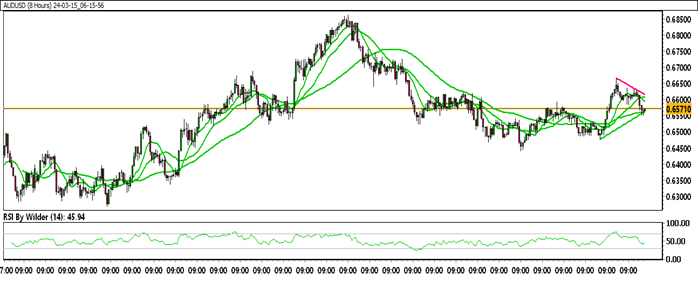AUD/USD continues to decline following adverse data from China.
FUNDAMENTAL OVERVIEW:
- On Friday, negative Chinese house price data weighed on the Australian Dollar.
- Additionally, a decrease in Chinese new loans and M2 money supply further underscored the tightening narrative.
- The AUD/USD experienced a decline on Thursday following US data indicating inflationary pressures within the US economy.
On Friday, AUD/USD is down by nearly two-tenths of a percent, continuing the selling pressure observed on Thursday into the weekend. The pair is under strain due to adverse Chinese housing and lending data, suggesting that the property sector in the world’s second-largest economy remains a significant concern.
The subdued Chinese data adversely affects the Australian Dollar, given its heavy dependence on the Chinese market for exports, notably iron ore, Australia’s primary export commodity.
The S&P/ASX 200 Index of Australia plunges to its lowest point in three weeks amid a broad market downturn. Australian stocks track losses seen on Wall Street overnight, with significant declines led by major banking and iron ore mining companies. The Reserve Bank of Australia (RBA) maintains its position of potentially increasing interest rates, with the RBA’s policy decision slated for next week. Meanwhile, traders are expected to monitor the preliminary release of the US Michigan Consumer Sentiment Index for March, scheduled for Friday.
The US Dollar Index (DXY) gains from the hawkish outlook regarding the Federal Reserve’s consideration of maintaining its elevated interest rates due to ongoing inflationary pressures. Furthermore, US Treasury yields have climbed in the last four consecutive sessions, providing additional backing to the US Dollar (USD) and thus exerting downward pressure on the AUD/USD pair.
AUD/USD TECHNICAL ANALYSIS DAILY CHART:

Technical Overview:
AUD/USD is trading within an up channel.
AUD/USD is positioned below the 10&20 Moving Averages (SMA).
The Relative Strength Index (RSI) is in the Buying zone, while the Stochastic oscillator suggests a Neutral trend.
Immediate Resistance level: 0.6573
Immediate support level: 0.6546
HOW TO TRADE AUD/USD
After a notable rise, AUD/USD experienced a subsequent decline and entered a consolidation phase within a specific range. Presently, attempts to move higher have been short-lived, leading to a fall. Currently, the pair is trading around a significant support zone. If this zone continues to be respected, there is potential for AUD/USD to witness some upward momentum.

